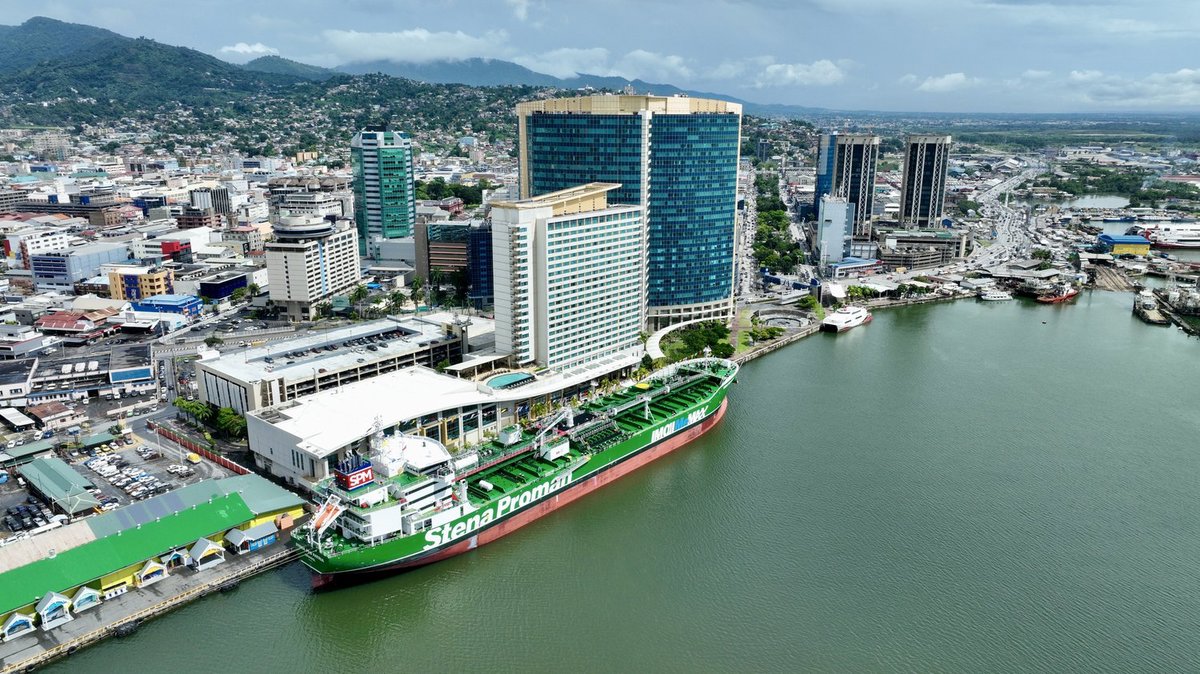Proman ramps up methanol bunkering in Trinidad
Methanol producer Proman is set to reach a total of 12,500 mt of methanol bunkered volume at the Port of Point Lisas in Trinidad by the end of this month.
 PHOTO: Methanol-capable oil/chemical tanker Stena Pro Patria docked at the Port of Spain in Trinidad. Proman Stena Bulk
PHOTO: Methanol-capable oil/chemical tanker Stena Pro Patria docked at the Port of Spain in Trinidad. Proman Stena Bulk
Proman bunkered a chemical tanker, Stena Prosperous, with methanol at the Port of Point Lisas on 16 August. Another chemical tanker, Stena Pro Patria, is scheduled for bunkering at the same port later this month.
The refuelling of Stena Pro Patria will bring the total methanol bunkered volume at the Port of Point Lisas to 2,100 mt for August and 12,500 mt over the past 12 months, Proman reported.
The grey methanol was supplied from Proman-operated plants in Trinidad. The infrastructure readiness for methanol bunkering at the port and the readily available supply highlight Trinidad's potential as a “methanol bunkering hub,” according to Proman.
Grey methanol ≠ emission reduction
Proman operates five methanol plants in Trinidad and Tobago, where it produces grey methanol using natural gas and CO2 as feedstock.
Grey methanol cannot be used to reduce a vessel’s emissions. According to a report by Longspur Research, grey methanol produces 1.14 mt of CO2 per mt (mtCO2/mt) of fuel, whereas VLSFO emits 1 mtCO2/mt of fuel. This means grey methanol emits 14% more CO2 than VLSFO.
As a result, methanol-capable vessels must bunker green methanol like bio- or e-methanol (0.05 mtCO2/mt of fuel) to achieve emission reductions.
Green methanol can be used as a drop-in fuel, similar to how biofuels are blended with MGO or VLSFO. Dual-fuel vessels equipped with methanol-capable engines and fuel supply systems do not require modifications to run on green methanol or its blends.
By Konica Bhatt
Please get in touch with comments or additional info to news@engine.online





